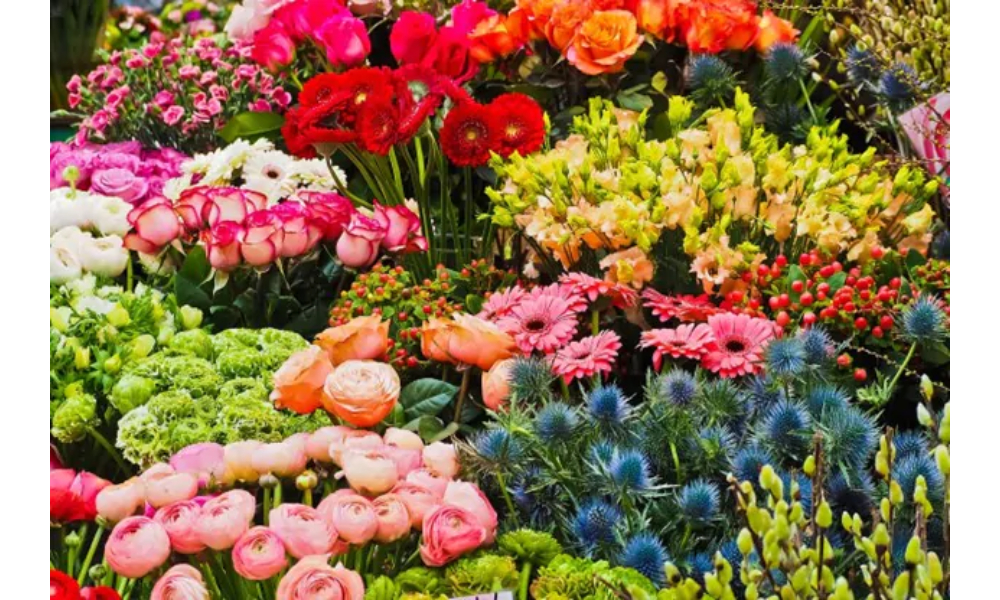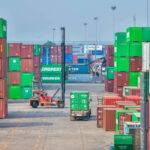The global demand for fresh flowers and floral supplies continues to bloom. The market is projected to grow by over six percent in the coming years, surpassing the $57 billion mark by the end of 2024 and reaching approximately $66 billion by 2028.
Currently, about one in three U.S. consumers are open to buying fresh flowers, making this an opportune time to enter the business. For those looking to dive into this blossoming industry, it helps to understand how wholesale flower market works —and how to source blooms and supplies effectively.
When purchasing fresh flowers in bulk, three key elements must be kept top of mind: flower quality, stem cost, and seasonal availability. A solid grasp of these factors will help ensure a successful wholesale flower business. Learn more in the guide below.
Steps to Buying Wholesale Fresh Flowers
Many fresh flower wholesalers can be found online or through business directories. These wholesalers typically offer a wide selection of bulk flowers categorized by event, purpose, and occasion.
To get a feel for the process, it’s wise to explore online platforms that offer direct farm-to-door delivery. This can help streamline the sourcing process and cut down on logistics.
Several companies specialize in offering competitive pricing on large flower orders and convenient delivery services. However, don’t overlook local options, which can sometimes offer fresher products and quicker turnaround times.
As you shop, be mindful of the overall quality of the blooms and compare stem prices from a business perspective. It’s also vital to consider the seasonality of your flower selections—some varieties will only be at their best during certain times of the year.
To run a full-service flower business, you’ll also need to invest in a few key floral tools and supplies, which we’ll cover next.
Supplies for Fresh Flower Sales and Arrangements
A core item in any floral toolkit is floral foam, which absorbs and holds water to keep flowers hydrated and long-lasting. Wet foam, typically green, is used for fresh flowers, while dry foam, usually grey, is used for dried or artificial arrangements.
These foams serve as the foundation for most floral displays, helping hold stems securely in place during transport and sale.
Other essential items include vases, containers, and floral tape, which are all used to build attractive arrangements. Floral clippers and stem ties will help ensure precise trimming and presentation.
Equipping yourself with these basics will give you the flexibility to create beautiful and durable arrangements suitable for any customer.
Considerations for Fresh Flower Arrangements and Vase Work

The container you choose for your arrangement is more important than you might think. Some florists favor mason jars for a rustic, homegrown aesthetic, while others opt for simple, neutral-toned vases to make the flowers stand out.
Carefully consider the shape, color, and size of your container. Using a vase that’s too small or too large can throw off the harmony of the display.
As a general guideline, the height of your flower arrangement should be about one and a half times the height of the vase and roughly double the width.
Smaller arrangements can be placed in elegant glass cubes or other compact vessels for a refined look. Adding filler materials and decorative ribbon can also enhance the overall appeal and sophistication of your designs.
Wholesale Flower Distributors in the U.S.
If you’re exploring the B2B side of wholesale flowers, it’s helpful to understand the landscape of domestic distributors. Several well-established growers and suppliers operate across different regions of the United States.
Some are based on the West Coast and offer both locally grown flowers and imported varieties from overseas markets. These businesses often specialize in a mix of seasonal and year-round blooms.
Others serve the Mid-Atlantic region and beyond, offering wide-reaching delivery services and also supplying tools and accessories for florists.
In southern regions, some wholesalers focus on sourcing flowers from nearby countries, allowing for a broad inventory of tropical and traditional varieties.
Major growers with vast growing fields across multiple states are also key players in the wholesale market, offering thousands of plant varieties and reliable nationwide shipping. These distributors partner with florists, landscapers, retailers, and more.
Some suppliers operate greenhouses in the Northeast and Southeast, catering to businesses that value consistent quality and dependable supply throughout the year.
Conclusion
The wholesale flower market presents an exciting opportunity for those looking to build a business in the floral industry. With rising consumer interest and market growth, now is a great time to learn how to source quality blooms and reliable supplies.
Success in this field depends on choosing high-quality flowers, keeping costs manageable, understanding seasonality, and having the right tools and presentation methods in place. Whether you’re arranging bouquets for events or stocking retail shelves, attention to detail and thoughtful sourcing can help your floral business flourish.

 How Much Is Luggage Storage In Bangkok?
How Much Is Luggage Storage In Bangkok?  Proven SEO Secrets to Get Your Website on the First Page of Google
Proven SEO Secrets to Get Your Website on the First Page of Google  Why Slide Truck Services in Rama 2 Are a Lifesaver for Stranded Drivers
Why Slide Truck Services in Rama 2 Are a Lifesaver for Stranded Drivers  10 Smart Weight Loss Tips That Actually Work in Real Life
10 Smart Weight Loss Tips That Actually Work in Real Life  Why Slide Truck Services in Lat Krabang Are the Smart Choice for Emergencies
Why Slide Truck Services in Lat Krabang Are the Smart Choice for Emergencies  Understanding Partial Hospitalization Programs (PHPs)
Understanding Partial Hospitalization Programs (PHPs)  The Science of Wonder: Creating Perfect Birthday Magic
The Science of Wonder: Creating Perfect Birthday Magic  Effective Strategies for Healthcare Advertising: A Comprehensive Guide
Effective Strategies for Healthcare Advertising: A Comprehensive Guide 